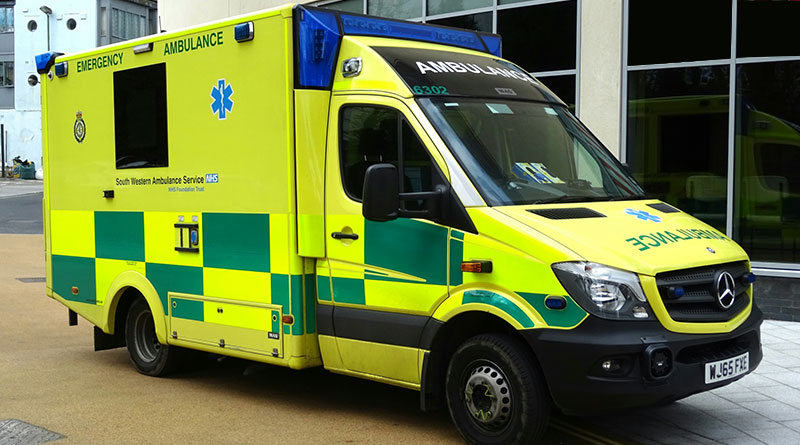Over 3 Million Ambulance Call Outs for Falls in Four Years
Almost £1 billion has been spent on ambulance calls for falls over the past four years, figures have revealed.
Data from ambulance trusts have revealed paramedics are dealing with an average of 2,799 calls for falls related injuries a day, with the number of patients requiring transfer to hospital growing 28% between 2020 and 2022.
The highest number of calls were seen in 2022, with 1,134,653 calls made to the 13 Ambulance Trusts in Great Britain. Between January 2020 and September 2023, 3845,446 calls were made.
The huge number shows the pressure being placed on the country’s ambulance services, with experts saying the rise could be down to a growth in inactivity, particularly as the highest growth occurred after the longest periods of lockdown.
With an average cost of £228 for an ambulance to attend and treat a person, it means an estimated £689,000 A DAY is spent helping people with falls related injuries, which can range from a simple tumble to a complex fracture. This is broken down to £205,000 a day attending and treating people on scene, and a further £484,000 a day for those who paramedics consider need to attend A&E.
The costs exclude any time spent in hospital where an average best costs an average of £345 per day for a standard bed and £901 for non-elective admissions.
The majority of the calls are anticipated to be made by older or frail people who are unsteady on their feet.
The cost of calling out ambulances alone in the four years for people who reported a fall is estimated at more than £949,784,288 paid by integrated care boards across the country between January 2020 and September 2023.
The data also revealed how some patients are waiting nearly TWO DAYS for help to arrive, with one person waiting nearly 45 hours in Wales for a category 3 incident and 21 hours in Yorkshire for a fall classed as ‘category 2’.
One of the leading reasons for falls is muscle weakness caused by inactivity.
Evidence suggests that skeletal muscle mass and skeletal muscle strength decline in a linear fashion, with up to 50% of mass being lost by the 8th decade.4
“Anecdotally, managing frailty-related issues is increasingly paralysing all parts of the health and social care system,” says Dr Graham Barter, an NHS GP who has been practicing for 35 years.
“Getting the elderly and/or frail to limit their activity and rest excessively is only likely to cause further decline. Conversely regular activity and exercise can improve function at any age.
“I believe that the frail and elderly should be empowered to live as full and active lives as possible. To this end their relatives and those responsible for their care have to be prepared to tolerate some risk to avoid inadvertently limiting them.
“Over protection can accelerate an individual’s decline, paradoxically increasing risk in the future. Maintaining a healthy diet and a good level of activity or exercise can slow or reverse general decline.”
Vicky Mudd, Clinical Director at Access Health Support and Care (HSC) said:
“These statistics show the huge pressure being placed on emergency services and it is important that we take the time to explain to people the steps they can take themselves, and the support which is available, to enjoy independence and a better quality of life for longer.
“Activity – at whatever level is suitable for an individual – should be encouraged particularly if it allows people to keep in touch with friends and family and avoid becoming isolated.
“Thanks to technology, there are many ways we can enable people to continue to embrace life, knowing help is always at hand if it is needed. It can be the way we support loved ones to continue to do the things we enjoy and the things we need to do.”
“Real-time data, sensors to enable trend analysis and location mapping of an individual, are all features that technology can deliver now to give individuals the confidence to be independent, knowing that help is at hand if needed.”
Falls are the number one reason older people are taken to an emergency department and the most common cause of injury-related deaths in people aged over 75.6 In around 5% of cases, a fall leads to a fracture.






